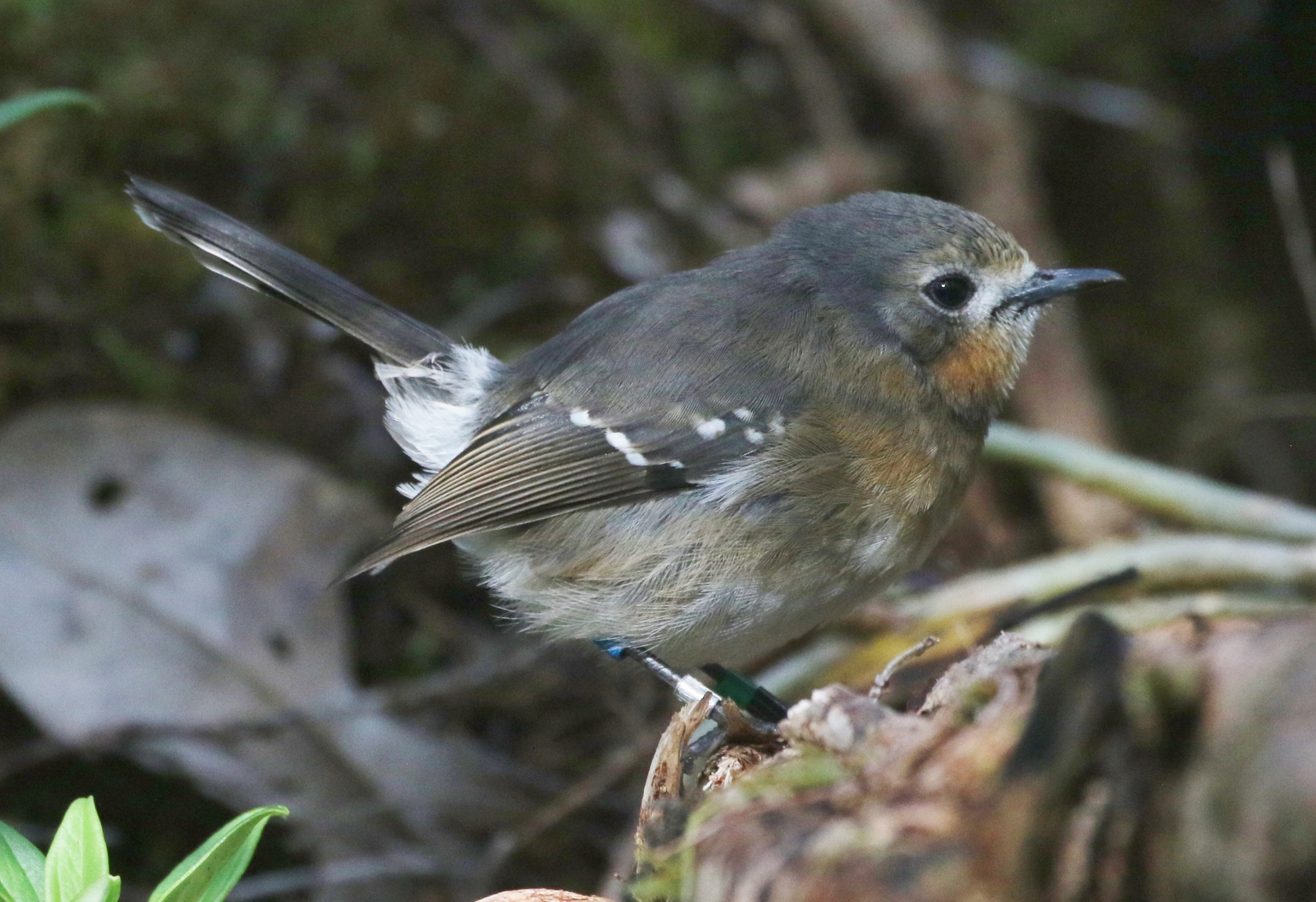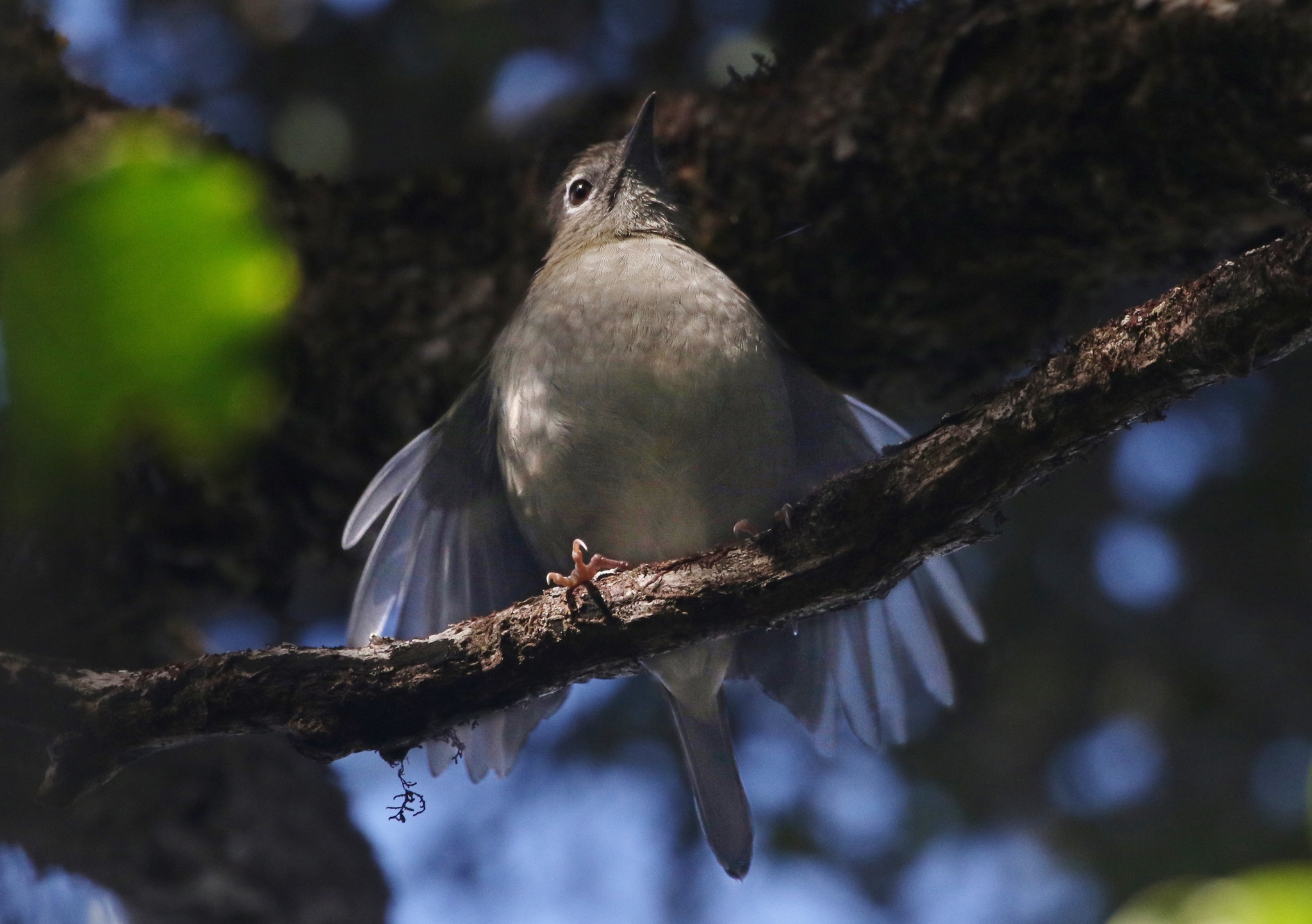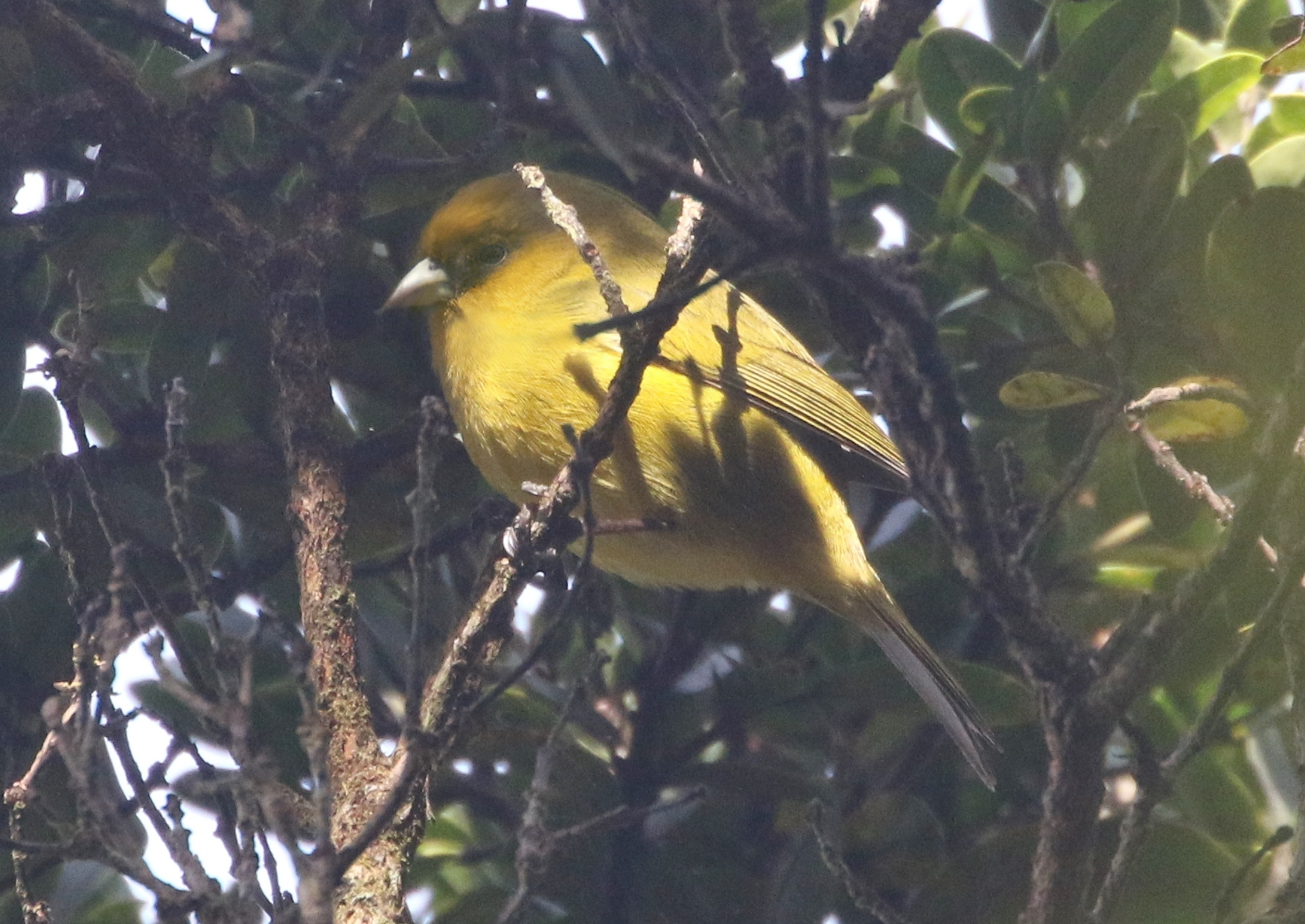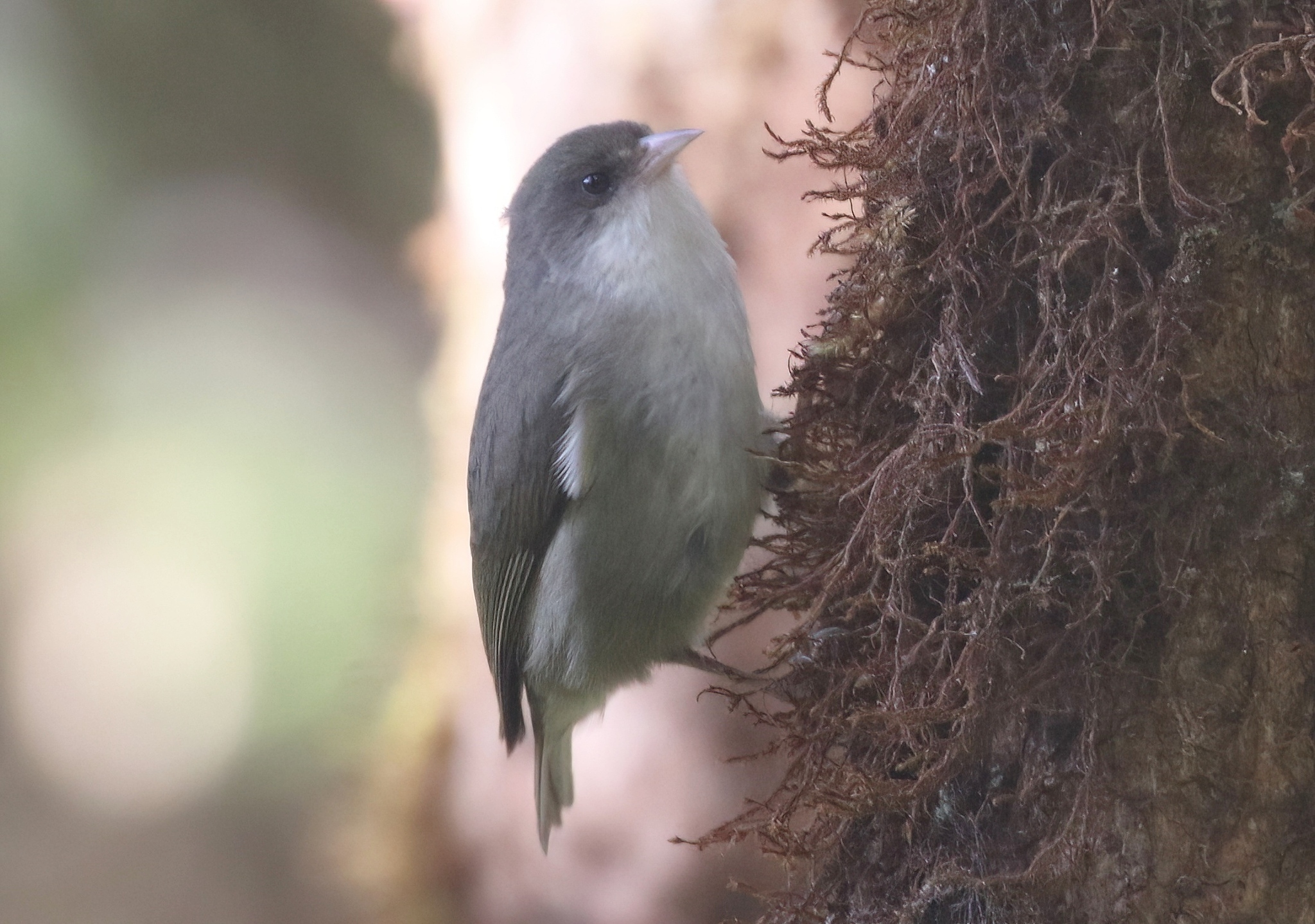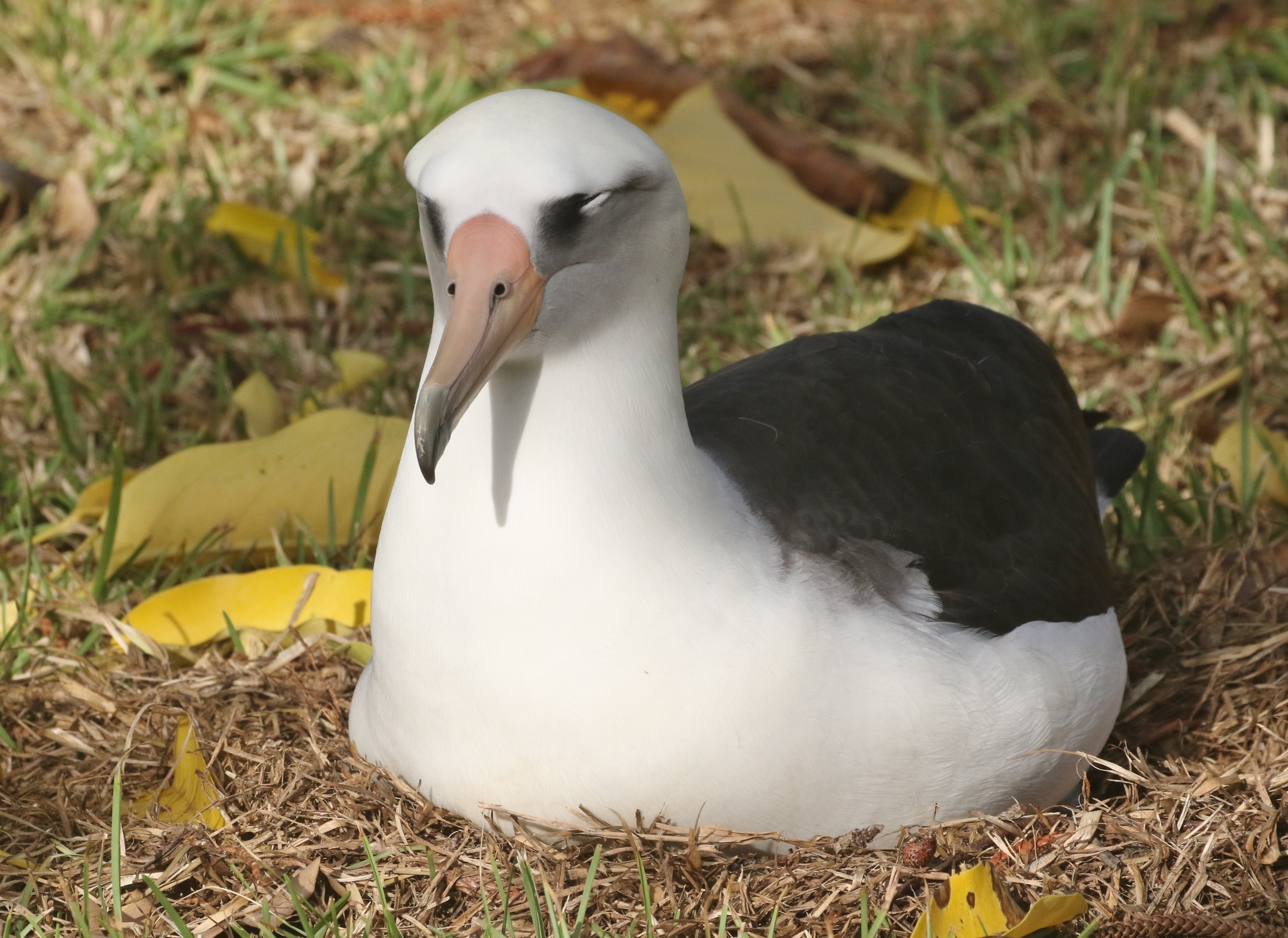Tiraya
San Diego CA

It was not long ago that I had assigned myself a very specific rule. As fate would have it, it only took a gentle threat to circumvent this rule of "stop going to Hawai'i over new destinations". A decided four days later, fortunately timing well with work vacation, I was once again in Lihue, for the second time this year. What drove me to undertake such a trip, at a time of year so rampant with COVID, flu, RSV, and expensive hidden resort fees? Birds, naturally.
My first visit to Kaua'i was the very same trip I took in January this year. I had arrived with company from Los Angeles, with intents much like those of just about any other birder who sets foot on the Garden Isle. See as many endemic birds as possible! Alas we are a little ill-prepared, or perhaps better to say that we were unmotivated and physically unfit to tackle the severity of the trails required to be thorough. As many who have studied up on Kauai are aware, island endemics Kaua'i 'Amakihi, Kaua'i 'Elepaio, and 'Anianiau are more easily accessed. But there's also three others, which I affectionately call the Kaua'i-3. 'Akikiki, 'Akeke'e, and Puaiohi, all very remote and some of the most challenging birds to come across in the archipelago. To make matters worse, all 3 of these species are sharply declining, multiplying their difficulty from "very hard" to "nearly unthinkable". Needless to say, I did not encounter any of the K-3 in January.
Fast-forward to December of this year. A foraging group of 'Akikiki, the least numerous of the K-3, is reported from the remote swamp wildlands of Kaua'i. The population of this species is thought to be as low as 30 birds as of the time of writing, and the window to see them was shrinking rapidly, with the possibility of extinction in the wild as soon as January next year. Simply put, if captive breeding and release fails, this would be the last chance I'd ever have if I wanted to see one in the wild. To sweeten the deal, this far into the wilderness, there was also a non-zero chance at encountering the other 2 species of the K-3, the Puaiohi and 'Akeke'e. I contacted someone I knew had been to the area and arranged a tour of sorts whenever dates allowed. But there was another problem. December is the wettest month of the year on the Garden Isle, and the forecast seemed bleak. Even a slight drip of rain would relegate the steep muddy hiking to perilous insanity, and there was a high chance the road would be impassable even with 4wd. I watched with nail-biting anxiety as the forecast continued to show heavy rain for every single visible day of the month, continuously. But among the doom and gloom, a single day offered a boon of sun. Weather forecasts in Hawai'i are scarcely reliable, but there was nothing I could do about it. If I wanted to see this bird, it could not wait for next year. Despite being skunked by Palila many times this year, a bird that is rare but still considered several leagues easier than the Kaua'i-3, I was stubbornly hopeful.
Day 1 - The Arrival
The plane arrives shortly after noon. I packed this short trip specifically to avoid luggage, and so the long wait for suitcases to be funneled from the plane was thankfully eliminated. Lihue is a small airport, and waiting times can be great. The weather is marvelous -- patchy clouds, but otherwise clear. It was a positive omen, and one I was dearly crossing my fingers for. I meet company at the airport, who helpfully hired a Jeep for the coming venture. The road to the wilderness required 4wd with no exceptions, and that was when it was feeling benevolent. But today was not the day of the hike, and so we spent the afternoon combing the north and eastern shore of the island for various odds and ends.
Kilauea Point (aka The Lighthouse) is a popular location for tourists. Sometime since COVID, this area now requires advance reservations to access, but thankfully spaces were ample for our visit, and we were able to decide last minute. Kilauea is a scenic peninsula on the north shore of Kaua'i, and offers great views of common seabirds. The first endemic bird of the trip is the Nene (nay-nay), also known as the Hawaiian Goose. All modern day Nene on Kaua'i are the result of an accidental introduction of captive birds, and this may be part of why they are well-habituated to human. A short walk to the lighthouse produced several common, but interesting birds: Red-footed Booby in the thousands, a smaller handful of Brown Booby, occasional fly-bys of Greater Frigatebird, White-tailed Tropicbird, and rarely, a Wandering Tattler. Turning our back on the ocean, we scoped a small colony of Laysan Albatross that were nesting under Casuarina trees to the southwest, above nearby residences. My only previous sighting of this albatross was off a pelagic in Santa Barbara, California, many years ago, and it was a treat to see more, even if at long range.
But I had been informed me that there were far better viewing opportunities, and so we drove to Princeville. Before turning into the neighbourhoods, we briefly stopped to check out a Snow Goose on a golf course nearby. This adult bird stood out like a sore thumb, and was accompanying a family group of Nene. Ponds here gave the first views of both Hawaiian Coot and Hawaiian Gallinule (ssp.) of the trip. It isn't clear to me why only the coot is considered a full species, and the gallinule isn't, but I suppose taxonomists had their reasons. Both of these birds have larger facial shields than their mainland (American) equivalents. It was soon time to carry on, and a short winding drive through the neighbourhoods of Princeville revealed two things to me. First, that the houses in this area were more expensive than I could ever imagine. Second, that there's next to nothing in the tightly manicured urban streets that looked like albatross habitat. Turns out, I was quite wrong. We drive to the end of the road, where the ocean is visible through gaps in the houses. I step out, and observe a concrete driveway, with old battered stones and covered in moss and lichen. Parallel is a high hedge that reaches as far up as the roof of the house standing on that very property. But between the hedge and the driveway is a narrow strip of grass, not even wide enough to stand on without feeling the leaves on your back. And on that grass, is an albatross, fast asleep.
Our "find-an-albatross" scavenger hunt of this neighourbood resulted in 3 albatross total. It's seemingly absurd that these hulking birds have chosen this developed area to set up their nests. As we observe one bird sitting on another lawn, we turn our heads and see a lumbering motion of white travelling up the driveway. Another albatross has arrived, plodding with ungainly footing towards us. It spends a few minutes sharing bill clicking displays with the bird we were originally watching, before simply crossing the road and waddling up the street and around the corner. Presumably, somewhere in that direction, was another nest.
With sunlight threatening to fade, we make our way towards the taro fields of the Hanalei National Wildlife Refuge. On the ponds by the road, we quickly come across several pairs of Hawaiian Duck, in addition to more Hawaiian Coots. The first Night-herons of the trip are also observed, silently posing among the taro, along with the smartly-patterned Hawaiian Stilt (ssp.). Kaua'i is the only island that Hawaiian Duck can be safely determined, as hybridization with Mallards is very limited. Hopefully it stays that way. One of the Hawaiian Coots present was the less common morph, with red pigment on the facial shield. Of course, it was also the least cooperative Hawaiian Coot I have encountered, with the bird making a very swift and frantic escape on being spotted. Another time, then.
With light falling short, attention was shifted to other organisms. A nearby stream offered some decent, but ripple-obscured views of two endemic gobies, 'O'opu Nakea and 'O'opu Naniha. Because I spend little time in the water, fish observations are few and far between, so it was nice to have a chance to observe and check off a couple more, and endemic species to boot. The day commenced in a shallow cave further to the west, one which I had visited in January and discovered an unusual cricket song. Although the singing males were again elusive in deep crevices, I was able to find females on the cave floor and identify the species. Unfortunately it is non-native, but nonetheless a welcome tick on the list. The day is over, and we head back to Lihue. Tomorrow was the day of our journey into the wilderness, and ample sleep eagerly awaited.
My first visit to Kaua'i was the very same trip I took in January this year. I had arrived with company from Los Angeles, with intents much like those of just about any other birder who sets foot on the Garden Isle. See as many endemic birds as possible! Alas we are a little ill-prepared, or perhaps better to say that we were unmotivated and physically unfit to tackle the severity of the trails required to be thorough. As many who have studied up on Kauai are aware, island endemics Kaua'i 'Amakihi, Kaua'i 'Elepaio, and 'Anianiau are more easily accessed. But there's also three others, which I affectionately call the Kaua'i-3. 'Akikiki, 'Akeke'e, and Puaiohi, all very remote and some of the most challenging birds to come across in the archipelago. To make matters worse, all 3 of these species are sharply declining, multiplying their difficulty from "very hard" to "nearly unthinkable". Needless to say, I did not encounter any of the K-3 in January.
Fast-forward to December of this year. A foraging group of 'Akikiki, the least numerous of the K-3, is reported from the remote swamp wildlands of Kaua'i. The population of this species is thought to be as low as 30 birds as of the time of writing, and the window to see them was shrinking rapidly, with the possibility of extinction in the wild as soon as January next year. Simply put, if captive breeding and release fails, this would be the last chance I'd ever have if I wanted to see one in the wild. To sweeten the deal, this far into the wilderness, there was also a non-zero chance at encountering the other 2 species of the K-3, the Puaiohi and 'Akeke'e. I contacted someone I knew had been to the area and arranged a tour of sorts whenever dates allowed. But there was another problem. December is the wettest month of the year on the Garden Isle, and the forecast seemed bleak. Even a slight drip of rain would relegate the steep muddy hiking to perilous insanity, and there was a high chance the road would be impassable even with 4wd. I watched with nail-biting anxiety as the forecast continued to show heavy rain for every single visible day of the month, continuously. But among the doom and gloom, a single day offered a boon of sun. Weather forecasts in Hawai'i are scarcely reliable, but there was nothing I could do about it. If I wanted to see this bird, it could not wait for next year. Despite being skunked by Palila many times this year, a bird that is rare but still considered several leagues easier than the Kaua'i-3, I was stubbornly hopeful.
Day 1 - The Arrival
The plane arrives shortly after noon. I packed this short trip specifically to avoid luggage, and so the long wait for suitcases to be funneled from the plane was thankfully eliminated. Lihue is a small airport, and waiting times can be great. The weather is marvelous -- patchy clouds, but otherwise clear. It was a positive omen, and one I was dearly crossing my fingers for. I meet company at the airport, who helpfully hired a Jeep for the coming venture. The road to the wilderness required 4wd with no exceptions, and that was when it was feeling benevolent. But today was not the day of the hike, and so we spent the afternoon combing the north and eastern shore of the island for various odds and ends.
Kilauea Point (aka The Lighthouse) is a popular location for tourists. Sometime since COVID, this area now requires advance reservations to access, but thankfully spaces were ample for our visit, and we were able to decide last minute. Kilauea is a scenic peninsula on the north shore of Kaua'i, and offers great views of common seabirds. The first endemic bird of the trip is the Nene (nay-nay), also known as the Hawaiian Goose. All modern day Nene on Kaua'i are the result of an accidental introduction of captive birds, and this may be part of why they are well-habituated to human. A short walk to the lighthouse produced several common, but interesting birds: Red-footed Booby in the thousands, a smaller handful of Brown Booby, occasional fly-bys of Greater Frigatebird, White-tailed Tropicbird, and rarely, a Wandering Tattler. Turning our back on the ocean, we scoped a small colony of Laysan Albatross that were nesting under Casuarina trees to the southwest, above nearby residences. My only previous sighting of this albatross was off a pelagic in Santa Barbara, California, many years ago, and it was a treat to see more, even if at long range.
But I had been informed me that there were far better viewing opportunities, and so we drove to Princeville. Before turning into the neighbourhoods, we briefly stopped to check out a Snow Goose on a golf course nearby. This adult bird stood out like a sore thumb, and was accompanying a family group of Nene. Ponds here gave the first views of both Hawaiian Coot and Hawaiian Gallinule (ssp.) of the trip. It isn't clear to me why only the coot is considered a full species, and the gallinule isn't, but I suppose taxonomists had their reasons. Both of these birds have larger facial shields than their mainland (American) equivalents. It was soon time to carry on, and a short winding drive through the neighbourhoods of Princeville revealed two things to me. First, that the houses in this area were more expensive than I could ever imagine. Second, that there's next to nothing in the tightly manicured urban streets that looked like albatross habitat. Turns out, I was quite wrong. We drive to the end of the road, where the ocean is visible through gaps in the houses. I step out, and observe a concrete driveway, with old battered stones and covered in moss and lichen. Parallel is a high hedge that reaches as far up as the roof of the house standing on that very property. But between the hedge and the driveway is a narrow strip of grass, not even wide enough to stand on without feeling the leaves on your back. And on that grass, is an albatross, fast asleep.
Our "find-an-albatross" scavenger hunt of this neighourbood resulted in 3 albatross total. It's seemingly absurd that these hulking birds have chosen this developed area to set up their nests. As we observe one bird sitting on another lawn, we turn our heads and see a lumbering motion of white travelling up the driveway. Another albatross has arrived, plodding with ungainly footing towards us. It spends a few minutes sharing bill clicking displays with the bird we were originally watching, before simply crossing the road and waddling up the street and around the corner. Presumably, somewhere in that direction, was another nest.
With sunlight threatening to fade, we make our way towards the taro fields of the Hanalei National Wildlife Refuge. On the ponds by the road, we quickly come across several pairs of Hawaiian Duck, in addition to more Hawaiian Coots. The first Night-herons of the trip are also observed, silently posing among the taro, along with the smartly-patterned Hawaiian Stilt (ssp.). Kaua'i is the only island that Hawaiian Duck can be safely determined, as hybridization with Mallards is very limited. Hopefully it stays that way. One of the Hawaiian Coots present was the less common morph, with red pigment on the facial shield. Of course, it was also the least cooperative Hawaiian Coot I have encountered, with the bird making a very swift and frantic escape on being spotted. Another time, then.
With light falling short, attention was shifted to other organisms. A nearby stream offered some decent, but ripple-obscured views of two endemic gobies, 'O'opu Nakea and 'O'opu Naniha. Because I spend little time in the water, fish observations are few and far between, so it was nice to have a chance to observe and check off a couple more, and endemic species to boot. The day commenced in a shallow cave further to the west, one which I had visited in January and discovered an unusual cricket song. Although the singing males were again elusive in deep crevices, I was able to find females on the cave floor and identify the species. Unfortunately it is non-native, but nonetheless a welcome tick on the list. The day is over, and we head back to Lihue. Tomorrow was the day of our journey into the wilderness, and ample sleep eagerly awaited.




